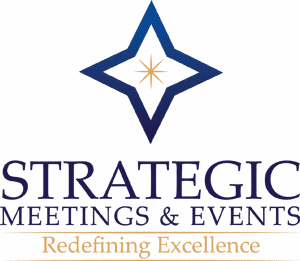32 Ways to Prospect for Sales Leads Without Cold Calling
By Alexander Howard
Cold calling is one of the oldest tricks in the book. And like many old techniques, it’s often outshined by newer, more efficient ways of doing business.
An overreliance on cold calling can be a good indication that an independent sales agent is too inexperienced to know how to effectively reach his or her target audience. A good shortcut can save you hundreds of hours of misplaced effort and dead-end leads. That’s why we’ve reached out to 32 industry sales experts to provide highly-effective tips that’ll help you put down the phone and pick up more clients.

1. Get as Many Referrals as Possible
Brett Wells (Chief Research Officer at Talent Plus, Inc.) @BrettMWells
Successful sales agents constantly receive referrals from their current clients. Why is this so important? According to OpenView Labs, 73% of executives prefer salespeople referred by someone they know, 84% of B2B decision makers start the buying process with referrals, and referrals convert 30% better than leads generated from other sources. In the age of the Net Promoter Score, it’s important to ask why clients give ratings of 9 or 10. Always focus on relationship building and look for opportunities that add value. One of our consultants won over a referral just by sending a birthday card.
Want to leverage referrals?
- Ask current clients if they would refer your services to a friend or colleague.
- For clients who respond positively, ask who they have in mind.
- Track your promoter’s connections on LinkedIn. If a connection’s promising, ask for an introduction.
- Share your successes with your clients, and express your appreciation via a handwritten note.

2. Refine Your Content
Steven Benson (CEO of BadgerMapping.com) @SteveBenson
Manage your resources through effective outbound content, customer service, and content marketing. Do research on the language and terms your ideal customers use and create content that answers their biggest questions. Refining your content not only strengthens your brand, it improves the quality and interest of your average prospect.

3. Be Honest About Your Services
Kevin Smith (Managing Director at Brainstorm Creative Studios) @brainstormcs
Transparency and flexibility are vital to success. Being honest about both the positive and negative aspects of your product is key to gaining trust and credibility in the marketplace. Recognizing your faults is vital to making a change. Flexibility will allow you to modify your product with each potential client and is an effective way to fix some of your negative aspects.

4. Understand Your Prospects
Colleen Stanley (President at SalesLeadership, Inc.) @EiSelling
Make sure to identify the vital attributes of your ideal prospects. Otherwise, you’ll fall into the sales trap of being busy but not productive. Most salespeople only look at demographics such as size and revenue when developing a pursuit strategy. Equally important are the psychographics, or the attitudes and cultures of a potential client. Ask these questions:
•Does the leadership believe in investing time and money in development, or do they subscribe to the sink or swim approach?
•Do they value outside counsel or are they do-it-yourselfers?
•Do they buy according to value or price?
Get clear on your best-fit client. You can be the greatest seller in the world and not close a single deal if you focus on prospects that can’t or won’t buy your product.

5. Write Effective Linkedin InMail
David Davies (Managing Director at Sandler Training) @SandlerTV
LinkedIn InMail can be an incredibly effective prospecting tool when done right. Most InMails are too long, though. Too much ‘buy-my-stuff’ diatribe. ‘Click-baiting’ with things like hyperlinks and attachments can be a major turn-off. InMails, or even emails, should aim to be 100 words or less. That translates into just three simply constructed sentences:
1: Make it personal: How do you know them? Find referrals, do research about potential clients, or dig up recent news about a company.
2: Show that you know their “pain”: What’s the problem? Show that you understand their pain points and share some problems you’ve solved.
3: Call to Action: What happens next? Suggest the next natural steps, typically in the form of a question.

6. Turn Your Network Into Your Extended Sales Team
Christy Lamagna (President of Strategic Meetings & Events) @SMEChristy
Your network will lead you to your next sale. The key is knowing how to turn your network into your extended sales team. The power of imagery is amazing. Instead of asking for people to think of someone who may need my services, which is vague and nonspecific, I paint them a picture. I’ll say, “I’m looking for someone with a winter tan and who wears an expensive timepiece.” When they see that person, BOOM, I’m on their mind.
If you want your path to lead to success, draw your network a map so they know how to help you get there.

7. Never Be Afraid to Ask For Referrals
Brian Marsh (Sales Director at Futurepump) LinkedIn
Successful agents know to always ask for referrals. Every meeting should end with “do you know anyone else who would benefit from my product/service?”, even if your prospect didn’t decide on your service. Get creative. Tell as many people as possible what you sell and never be afraid to ask. Your results will skyrocket.

8. Content, Content, and More Content!
Jeff Goldberg (Jeff Goldberg & Associates) @jeffgprospeaker
I frequently post content on my website and newsletter, but I especially like LinkedIn, as the audience is largely salespeople and managers. By offering valuable information instead of a sales pitch for your product or service, readers will come to see you as generous and an expert in your field. My experience has been that offering enough valuable content on a regular basis brings the prospects to you, rather than the other way around. Make it easy for your prospects to ‘raise their hand!’ Produce and share valuable content as often as possible.

9. Keep A Healthy Sales Pipeline
Ali Mirza (President of Rose Garden Consulting) Rose Garden Consulting
Keep your pipeline full of rich and viable prospects. An empty pipeline can leave salespeople placing undue importance on a small number of clients. The problem is that so many want a healthy pipeline but don’t know how to maintain it. For me, most of my deals come to me through my network. I make myself available at all times for lending a helping hand with sales. I establish myself as the go-to expert. The small amount of time I spend offering free help provides me with immeasurable ROI. Those I help always tell their friends and everyone in their network, affording me a constant inflow of people seeking my help.

10. Track Tweets in Your Target Market
Mike Kawula (CEO of Social Quant) Social Quant’s Website
Twitter is a phenomenal way to drive sales, regardless of whether you’re a local, national, international, online, or offline business. Don’t believe me? I grew my 50-person local cleaning business simply by following local tweets, starting conversations, and addressing pain points. This process also helped me grow a multi-million-dollar online office supply store by listening to and engaging with those mentioning our competitors. It’s an easy, painless alternative to cold calling that can literally happen within moments!

11. Do Your Homework
Joe Templin (Managing Director at The Unique Minds Consulting Group) @TheRealHeadGeek
Dedicate fifteen minutes before a meeting to do research and generate a list of potential introductions (ALWAYS ask to be introduced). Asking questions and showing you have already invested time earns you the right for more trust and introductions, and makes calling easy.

12. Use Mail Shots
Morlyn Duma Maturere (Freelance Sales Consultant) LinkedIn
Some of the best tactics that I have used, approved, and recommended include Mail Shots, social media, and online targeted sales. If your product or service targets small to medium-sized enterprises, sending Mail Shots to members under your local SME association can yield great results. Members who receive Mail Shots through their association have a high reading rate and (as long as a value proposition is great) at least 50% of the database will respond. Place your sales banners on websites that are frequented by your target market. For example, place a software sales banner on an online digital magazine site. That way, you’ll develop a pipeline of prospects who are already interested in your product, are willing to take your call, and have a high chance at converting into clients!

13. Research Your Prospects And Persist
Keith Crispin (Sales Director at Aotea Global Services (GB) Ltd) LinkedIn
Apply your solution to the market: what verticals or sectors are likely to be your potential customers? Determine who your best fit is, be they large multinational companies, SMEs, government departments, charities, or whoever else. Then decide who it is you need to reach, such as C-graders, department heads, or line managers. Obtain information on potential customers, turnover rates, employees numbers, lines of business, geographical locations, etc. Research the names and email addresses of target prospects. Determine your contact strategy for the next six to twelve months and don’t be put off with rejection or non-availability. The key is persistence. Most salespeople give up when they don’t get a quick result. If it’s worth achieving, it’s worth persevering for.

14. Become a Thought Leader
Kimberly Rath (Chairman & Founder of Talent Plus) @TalentPlusInc
Establishing a social media presence and becoming a thought leader through blogging can make all the difference. Engaging your target audience encourages them to spend more time listening to you and becoming part of the conversation. LinkedIn has become an increasingly important tool in the sales world, not only for connecting directly to potential prospects but for engaging entire communities of individuals on a particular topic or discipline.

15. Great Networking Takes Time
Brian Cox (Mobile Consultant at Leadpro Expert) @LeadproExpert
Sales agents can’t go from cold contacts to account representatives without the right network. And they can’t do it overnight. You should plan to spend around six months within a particular industry in order to fully develop your network. While working in that industry at the operational level, connect with people and develop a list of contacts. This list can easily become the bedrock of your sales effort. You have to develop a solid list of contacts before you can hope to get known by other professionals.

16. Go Old-School – Visit Prospects In Person
Gene Caballero (Co-founder of GreenPal) @gene_caballero
Whenever possible, pay a real-life visit to a potential customer and let them know who you are. It’s easy for clients to delete a voicemail or ignore an email, but meeting them in person might just give you the opportunity to get your foot in the door. It also shows that you’re willing to put forth a certain amount of effort. All in all, prospects tend to buy things from people they like.

17. Be Free With Your Advice
Janet Efere (Sales Trainer and Coach at Tadpole Training) @JanetEfere
Advertise yourself as someone who’s always willing to offer help and advice about sales. That doesn’t have to mean ‘free consultation’ – people often see this as code for ‘I’m trying to persuade you to sign up for something.’ Just freely and generously share information, templates, and proven processes. You’ll be surprised how many recommendations it leads to. I don’t worry about the people who never come back. Anyone who’s serious about growing their business will take my advice, see that it works, and want to come back on a more formal basis. Those who don’t aren’t my ideal clients in the first place, so I never had anything to lose.

18. Look for Speaking Engagements
Dan Warman (Continuous Improvement Manager at US Acute Care Solutions) LinkedIn
Attend industry trade shows with the aim to get a speaking or presenting spot at one of their ‘breakout sessions.’ The opportunity won’t only get you and your company in front of potential customers, it also gives you the chance to demonstrate expertise without it feeling like a sales pitch. Just make sure your speeches aim to teach and coach. The increased sales should only be an added benefit. People come to these events to learn. Turn your presentation into ‘just another sales call’ and you’ll lose them.

19. Utilize Your Alumni Network
Gretchen Hydo (Business Productivity & Life Coach at Any Lengths Life Coaching) @AnyLengthsCoach
Tap into your alumni organization. Many have monthly mixers that provide a friendly environment, giving you the opportunity to meet with like-minded people. You never know where these connections may lead and who might refer you.

20. Make It Easy for People to Find You
Janice Dru (Board Member at Inkwhy, Inc.) @Inkwhy
Set up your “engine” to get inbound requests for your products and services. Create a web page where you describe what you offer, answer frequently asked questions, and post testimonials from satisfied clients. Then make sure you also have an easy way for people to reach you, whether that be by phone, email address, or contact form. Start building a client list and follow up on communications and requests right away.
Push out your content across social media, as LinkedIn, Facebook, and Twitter are the top three places to be. Know where your audience is and post there consistently.

21. Make the Call!
Jeb Blount (CEO of Sales Gravy, Inc.) @SalesGravy
The best salespeople keep a whole arsenal of tricks and methods. The key to successful prospecting is to use every resource you have available. And yes, that includes cold calling!
“Stop wasting time reading dumb articles about how to avoid cold calling and pick up the damn phone!” – Jeb Blount

22. Don’t Neglect Your Old Contacts
Nick Kane (Managing Partner at Janek Performance Group) @JanekPG
Revisit existing accounts you haven’t spoken to in some time. Don’t make the mistake of calling them for the sake of “checking in.” Instead, catch up on your clients’ recent developments. Maybe they’ve launched a new product, won an industry award, or come across a promotion. Use this intel as a lead-in for your call.
You also want to plan your call ahead of time. Think about what you want to accomplish with your call and how to go about doing it. Ask your clients if they’ve been satisfied with previous purchases and find out if there’s a need for your continued services. If the timing isn’t right to move forward with a new opportunity just yet, ask for a referral. This is something that should go both ways – sharing a referral with your customer can go a long way in building rapport and trust.

23. Help Out Others
Thom Singer (Professional Speaker/Master of Ceremonies) @thomsinger
Be the one who helps others find success. Promote your prospects or introduce them to potential clients, vendors, partners, etc. The fastest way to get on my radar is to refer me business. I make sure to take calls from anyone who has helped me find success. Try to sell and maybe prospects will listen to you. But tweet about them and praise them in public and they’ll want to know who you are and why you’re helping them win.

24. Diversify Your Approach
Jon Barteaux (Principal at Barteaux and Associates) @barteaux
Prospecting for new business is paramount for a tier-one sales organization. The key is to diversify: I use lead generation outsourcing to find a volume of qualified leads but I also use LinkedIn’s InMail to connect one-on-one with C-level prospects. I try and meet with those who share common interests or ideas, but often times I’ll simply ask to be referred to their peers or partners. I also use social media monitoring tools, making sure to be very specific in what I am looking for when I’m trying to connect with prospects over Linkedin.
Use tools to diversify your approach, always with the goal to get the meeting and not to sell at first contact.

25. Write a Newsletter
Jessica Magoch (Co-Founder and CEO of JPM Sales Partners) @JessicaMagoch
Whether via email or snail mail, being able to directly communicate with potential and existing customers is priceless. In exchange for their email, offer a valuable freebie (or opt-in) that relates directly to your target audience. Examples include cheat sheets, whitepapers, mini-video lessons, and templates. Once you receive a person’s email, you must respect it. All of our inboxes are overloaded, and you want people to keep subscribed so that they don’t miss any valuable content. A welcome email series, which you can automate with your email list manager, can take prospects down a carefully curated journey that builds your relationship. That way, when you finally introduce your product or service, you’ll be able to make highly-qualified, hot leads. People will feel they need what you’re selling and want to buy it from you. And from that point on, you need to show them they were right!
Always use an email campaign manager, such as Mailchimp, to comply with anti-spam laws. And write every email as if you were speaking one-on-one with a friend or colleague.

26. Create a Personalized Email Template
Jimmy Woodard (Business Development Manager at 360 Designs) LinkedIn
Here’s a simple email that you can send to almost anybody in a company in order to reach a decision-maker:
“Happy (day of the week) (name of person), Do you know who is the best person to talk to about (pain point/unique solution)? I have some ideas that I think your team will like. Thanks in advance, (your name).”
Use a simple subject line like “quick question” and you’ll get at least a 25-30% response rate. Works like a charm!

27. Write a Letter
Tibor Shanto (Chief Sales Officer at Renbor Sales Solutions Inc.) @TiborShanto
It’s important to stand out when prospecting, especially when your targets are at the senior level. Going retro, specifically with handwritten notes in hand-addressed envelopes and real, non-metered postage, can be an effective way to stand out. Your message should be brief, to the point, and provocative. If your message gets prospects to stop and consider what they read, then you’ll immeasurably increase your chances at engaging. Handwritten notes (I usually use greeting cards) will almost always get into the hands of your targets. Just remember that, while you’ll still likely make a phone call at some point, it won’t be nearly as cold.

28. Embrace Social Media Selling
Elinor Stutz (Inspirational Speaker and Educational Trainer) @smoothsale
My prospecting process starts on Twitter. In 140 characters or less, I’m able to determine if there is synergy between the prospect and myself. I look for motivating, inspiring, and insightful information that both my followers and I can use. I then directly send a message to the prospect who initiated the tweet, moving to LinkedIn for a more detailed profile. I view website links and confirm contact information. After researching and confirming that there’s a connection to be made, I reach out once again to see if the person would like to have a conversation. I formally reach out over LinkedIn to see if they want to connect.
I’ve had countless executives reach out to me over LinkedIn and ask to connect. Social media has made it much easier for me to make it into the C-Suite.

29. Carry a Prospecting Letter with You
Chris Murray (Director at Varda Kreuz Training) @vardakreuz
Write yourself a template. Leave the space where you’d normally write “Dear (prospect name)” blank. Your template should cover everything in a single paragraph: who you are, why you do what you do, how you’ve helped people just like them, etc. Finish by telling you prospects that you’re sorry you’ve missed them and that you’ll give them a call tomorrow. Sign it with your best pen, pop it in an envelope, and always keep a few in your bag.
The next time you’re at an appointment, note your prospect’s office on the way out. Look him or her up LinkedIn. If you can’t find them on LinkedIn, ask the receptionist who to address it. Then use the same pen you signed your name with to complete your letter and hand it over to the front desk. Call back the next day to book an appointment or log your prospect into your pipeline.

30. Maximize Your User Traffic
Julien Arucci (Chief Commercial Officer for User Companies) @JulienArucci
Take advantage of customized forms and programs such as Userpop to maximize the potential of your websites.
Facebook, LinkedIn, and Amazon Ads are all amazing platforms that you should already be active on!

31. Avoid Self-Limiting Behavior
Alen Mayer (Keynote Speaker, Author, and Coach) Alen’s Blog
Selling is a head game: if your head isn’t in the game, it’s likely you’ll start struggling with your numbers. Sales executives, managers, and business owners often hamstring themselves with self-limiting attitudes and behaviors. I’ve found a consistent series of stories that people tell themselves that end up supporting these bad behaviors and negative thoughts. Overcoming them by changing our attitudes and thought patterns can help ensure a successful career, higher revenues, and long-term sustainable success for even the most inexperienced sales executive.
Some of the most common stories we tell ourselves include:
I’ll make those calls tomorrow.
That lead will close.
The client likes me, so they’ll buy from me.
The prospect always tells the truth.
“No” means “no forever”.
It’s not my fault.
I can talk my way into a sale.
If you’re a sales rep or manager struggling with these self-limiting attitudes, I recommend the Iceberg Sales Model, which is designed to go below the waterline of our behaviors and tackle the underlying issues that plague our performance.

32. Create Content That Actually Helps Your Audience
Richard Stephens (Director & Co-Founder of Angelfish Marketing) @stephens94
Cold calling is dead! There are now over 200 million people on the global do-not-call list, and those you do manage to reach out to will likely be less than thrilled to hear from you. So why would anyone want to start a sales call with the prospect annoyed at them?
The biggest piece of advice I can offer is to nail your content marketing by creating helpful media for your prospects that offers solutions to their business problems and attracts them to your website. You can then distribute this content online via social media platforms. This will help you make content that reaches the right people, grow your audience, and connect with prospects who are actually interested in what you have to offer.
And a few more bonus tips!

33. The Research-Tailored Approach
Rico Wyder (VP of sales at Avrios) @ricowyder
Use a combination of in-depth research and tailored tactics. Create a ‘prospect case’ for each company that you would like to target. Each prospect is influenced by its industry, its organization, and the individual to be targeted. Firstly, research every level that will influence the prospect. Map out who should be approached and evaluate online and offline strategies for each individual, especially if you want to go after more than one person in a company. Then create an appropriate approach and execute it. For example, a medium-sized construction company in Germany might always be best approached through the CEO using a personalized email. This internally triggers a referral email to the responsible person who you can then approach via phone call. Over time you will understand which tailored approach works depending on the company profile. Knowledge sharing is key here. A strong sales team can adjust and improve its approach over time.

34. Make a “Portable Exhibition Stand”
Bruce King (Presenter and coach) @brucemking
One of our salespeople became horrified when she realized that, instead of making phone calls in a comfortable office, she would have to spend her first two weeks on the job visiting industrial estates and asking to speak with managing directors. The first day she went to 65 offices and was ejected from most. She called me in absolute panic. I gave her instructions, and the following morning she purchased a small pop-up exhibition stand that could be erected in under three minutes.
She walked through her first door, quickly erected her ‘trade stand’ in the reception area, and placed company literature on top of it. Nobody had time to question what she was doing. She walked over to the reception desk, smiled, and asked that the MD come out for a quick demonstration. It was an irresistible approach. They came, they saw, she conquered! She made 23 sales in her first week. And while there might be better ways, the routine still works in a pinch!

35. Write a Book!
Jonny Cooper (Founder of TheSuccessParty.com) @thesuccessparty
Cold calling sucks, and it’ll suck the life right out of you if you let it. Don’t. Here are just a few of the benefits you can reap writing a successful book:
You’ll become a trusted expert and authority in your field.
You’ll make money doing it.
A book’s on sale 24-hours a day, and broadcasts you to your audience even while you sleep!
Sounds pretty great huh? Here’s how you start:
- Come up with a great title. Something like, “My 7 Life Mistakes: How I Screwed Up Everything And Came Out The Other Side”
- Make a plan for seven to ten chapters. A successful book can be as short as 60 pages.
- Write something every day and keep to a 30-day deadline.
- Don’t edit as you write. It spoils the flow.
- Hire an independent contractor for some groovy cover art.
- Get some pre-launch buzz from your social network.
- Finally, list your book on Amazon using their awesome guide to self-publishing.





